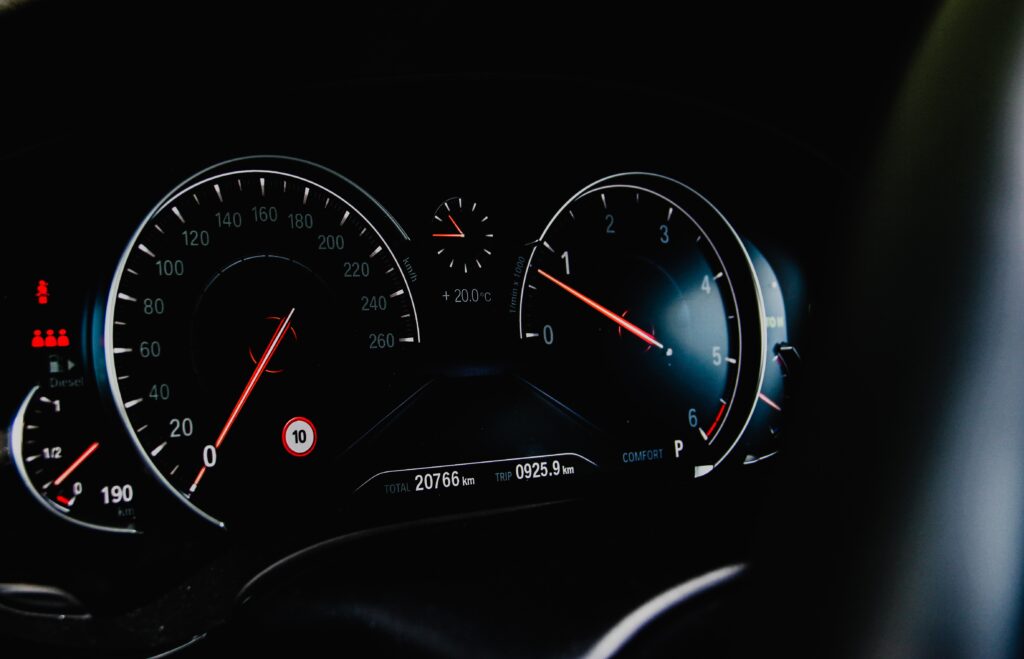If you’ve been contemplating upgrading your vehicle’s exhaust system, you may have wondered, “Can I convert my single exhaust system into a dual system?” The answer to that question is yes, it is possible to convert a single exhaust system into a dual system. However, it is not as simple as just adding an extra pipe. In this article, we will explore the steps and considerations involved in converting a single exhaust system to a dual system, so you can make an informed decision about whether this modification is right for your vehicle.
Understanding Exhaust Systems
Definition of an exhaust system
An exhaust system is an integral part of a vehicle that is responsible for removing the combustion gases produced by the engine. It consists of various components such as exhaust pipes, mufflers, catalytic converters, and exhaust tips. These components work together to guide the exhaust gases from the engine and safely discharge them outside the vehicle.
Function of an exhaust system
The primary function of an exhaust system is to remove the harmful gases produced during the combustion process. It enables the engine to breathe properly and improves overall engine performance. Additionally, the exhaust system helps reduce engine noise, directs the emissions away from the occupants of the vehicle, and contributes to the overall aesthetics of the vehicle.
Difference between single and dual exhaust systems
The main difference between a single and dual exhaust system lies in the number of exhaust pipes used. In a single exhaust system, there is only one pipe that carries the exhaust gases away from the engine. On the other hand, a dual exhaust system has two separate pipes, each dedicated to a particular side of the engine. This configuration allows for better exhaust flow and can potentially enhance the performance of the vehicle.
Benefits of Converting to Dual Exhaust System
Increased horsepower
One of the significant benefits of converting to a dual exhaust system is the potential increase in horsepower. As the dual exhaust system allows for better exhaust flow, it reduces backpressure on the engine. This reduction in backpressure can result in improved engine efficiency, leading to an increase in horsepower. With more power at your disposal, you can experience enhanced acceleration and overall performance.
Improved fuel efficiency
Contrary to popular belief, a well-designed dual exhaust system can actually improve fuel efficiency. By optimizing exhaust flow, the engine can breathe more efficiently, allowing for better fuel combustion. The improved combustion process can lead to a more efficient use of fuel, thus increasing fuel efficiency and potentially saving you money at the pump.
Improved car aesthetics
Another advantage of converting to a dual exhaust system is the improved car aesthetics. Dual exhausts are often associated with a sportier and more aggressive appearance. The symmetrical layout of two exhaust pipes can add a touch of style and visual appeal to your vehicle. It can also give the impression of a high-performance vehicle, even if your engine specifications remain the same.
Reduced engine noise
If you prefer a quieter ride, a dual exhaust system can help reduce engine noise. The dual configuration allows for better sound-dampening properties compared to a single exhaust system. The additional exhaust pipe and muffler can help absorb and dissipate sound waves more effectively, resulting in a quieter cabin environment. This can be particularly beneficial for long highway drives and for those who value a peaceful driving experience.

Drawbacks of Dual Exhaust System
Higher installation cost
Converting to a dual exhaust system typically involves higher installation costs compared to a single exhaust system. The process requires the purchase of additional components, such as a second exhaust pipe, muffler, and clamps. Additionally, the installation itself may be more complicated, especially if modifications need to be made to accommodate the second pipe. It is important to consider the associated costs before deciding to convert to a dual exhaust system.
Increased maintenance
With the addition of extra components, a dual exhaust system may require more maintenance compared to a single exhaust system. Two mufflers and exhaust pipes means twice the chance of Potential issues such as leaks or damage. Regular inspections and maintenance checks are necessary to ensure the proper functioning of the system. It is essential to factor in the additional maintenance requirements when considering a dual exhaust conversion.
Potential legality issues depending on location
When contemplating a conversion to a dual exhaust system, it is crucial to consider the potential legality issues that may arise depending on your location. Local laws and regulations regarding vehicle modifications can vary, and some jurisdictions may have restrictions on the type of modifications allowed. It is essential to research and understand the specific regulations in your area to ensure compliance and avoid potential legal complications.
Determining Suitability of Your Vehicle for Dual Exhaust System
Checking compatibility of vehicle model
Before proceeding with a dual exhaust system conversion, it is crucial to check the compatibility of your vehicle model. Not all vehicles are suitable for a dual exhaust setup, and some may require extensive modifications to accommodate the additional components. Consult your vehicle’s manufacturer or a professional exhaust technician to determine if your vehicle model is compatible with a dual exhaust system.
Evaluating size of the engine
The size of your vehicle’s engine also plays a vital role in determining the suitability for a dual exhaust system. Larger engines generally benefit more from dual exhaust setups, as they produce a higher volume of exhaust gases. Smaller engines may not experience significant performance improvements from a dual exhaust conversion. Consider the engine size and output when determining if a dual exhaust system is appropriate for your vehicle.
Assessing the space under the vehicle
The physical space available underneath your vehicle is another factor to consider when determining the suitability for a dual exhaust system. The installation of an additional exhaust pipe may require modifications to the existing undercarriage components. Adequate space must be available to accommodate the second pipe without interfering with any other important vehicle systems. Ensure that the clearances are sufficient and consult with a professional installer if you are unsure.

Components Required for Converting to Dual Exhaust System
Purchasing dual exhaust pipes
The main component required for converting to a dual exhaust system is the second exhaust pipe. The pipe should be compatible with your vehicle’s make and model, ensuring a proper fitment. It is essential to choose high-quality pipes made from durable materials to ensure longevity and optimal performance. Consider consulting with a knowledgeable exhaust specialist to determine the best type of exhaust pipes for your specific vehicle.
Acquiring suitable mufflers
When converting to a dual exhaust system, it is necessary to acquire suitable mufflers to accompany the second exhaust pipe. Mufflers are responsible for reducing engine noise and improving exhaust flow. Ensure that the mufflers you choose are compatible with your vehicle’s engine specifications and meet your desired sound preferences. Different muffler designs and materials can result in varying sound profiles, so do thorough research and consult professionals if needed.
Obtaining necessary clamps and hangers
To secure the dual exhaust system to your vehicle, clamps and hangers are essential components. Clamps are used to connect the exhaust pipes to each other and to the vehicle’s undercarriage. Hangers provide additional support and stability to the exhaust system. It is crucial to choose high-quality clamps and hangers that are compatible with your vehicle’s specific requirements. Consult with professionals or follow manufacturer guidelines for proper installation and selection of these components.
Professional Installation vs Do-It-Yourself (DIY)
Pros and cons of professional installation
Opting for professional installation of a dual exhaust system offers several advantages. Experienced technicians have the expertise and knowledge to ensure a proper fitment and installation. They are familiar with the potential challenges and can overcome them efficiently. Professional installers also have access to specialized equipment and tools required for the job. However, professional installation can be expensive, and it may not be as personally satisfying as a DIY project.
Pros and cons of DIY installation
For those with mechanical skills and experience, a DIY installation can be a rewarding endeavor. It allows you to have full control over the process and can be a cost-effective option. However, DIY installations require extensive knowledge, proper tools, and a good understanding of the vehicle’s exhaust system. Mistakes made during the installation process can lead to performance issues, leaks, or even damage to the vehicle. Make sure to assess your abilities and resources before undertaking a DIY dual exhaust system conversion.
Safety considerations
Whether you opt for professional installation or a DIY approach, safety should always be a top priority. When working with exhaust systems, there are potential risks such as burns from hot components and exposure to toxic gases. It is crucial to wear appropriate protective gear, including gloves and eye protection. Pay close attention to safety guidelines and always ensure proper ventilation when working with exhaust gases. If you are unsure about any aspect of the installation process, it is recommended to seek professional help to ensure your safety and the proper functioning of the exhaust system.

Step-By-Step DIY Conversion to Dual Exhaust
Removal of single exhaust system
Start by safely lifting your vehicle using appropriate jack stands and ensuring it is secured in place. Begin removing the components of the single exhaust system, including the exhaust pipe, muffler, and any associated hangers or clamps. Follow proper safety procedures and wear protective gear to prevent injuries or accidents during this process.
Installation of new exhaust pipes
Once the single exhaust system is removed, prepare the undercarriage for the installation of the new dual exhaust pipes. Position the dual pipes according to your vehicle’s configuration and secure them in place using suitable clamps and hangers. Ensure that the pipes are aligned properly and have adequate clearance from other vehicle components.
Installation of mufflers and exhaust tips
With the dual exhaust pipes in place, proceed to install the mufflers and exhaust tips. Ensure that the mufflers are firmly attached to the exhaust pipes and properly aligned. Take into consideration the desired sound profile and fitment when choosing the mufflers for your vehicle. Lastly, attach the exhaust tips to the mufflers, ensuring that they are symmetrically positioned and visually appealing.
Securing the system with clamps and hangers
To ensure the stability and longevity of the dual exhaust system, securely fasten it to the undercarriage using suitable clamps and hangers. Double-check that all connections are properly tightened and aligned. Perform a visual inspection to ensure there are no loose or hanging components that could interfere with the operation of the vehicle.
Emission Regulations and Legal Considerations
Understanding local emission standards
When modifying your vehicle’s exhaust system, it is essential to understand and comply with the local emission standards. Different regions have specific regulations regarding exhaust emissions, noise levels, and modifications. Ensure that the converted dual exhaust system meets the emission standards set forth by your local governing body.
Meeting noise regulations
Noise regulations can also impact the legality of a dual exhaust system conversion. Some jurisdictions have strict noise restrictions to reduce environmental noise pollution. It is crucial to ensure that the sound produced by your dual exhaust system adheres to the specified noise limits. Investigate and familiarize yourself with the noise regulations in your area to avoid potential legal consequences or penalties.
In conclusion, converting a single exhaust system to a dual exhaust system can provide benefits such as increased horsepower, improved fuel efficiency, enhanced car aesthetics, and reduced engine noise. However, there are drawbacks to consider, such as higher installation costs, increased maintenance requirements, and potential legal issues. Before proceeding with a conversion, it is essential to determine the suitability of your vehicle, acquire the necessary components, and decide whether professional installation or a DIY approach is most suitable for you. Always prioritize safety and adhere to local emission and noise regulations to ensure compliance and a satisfactory outcome.
